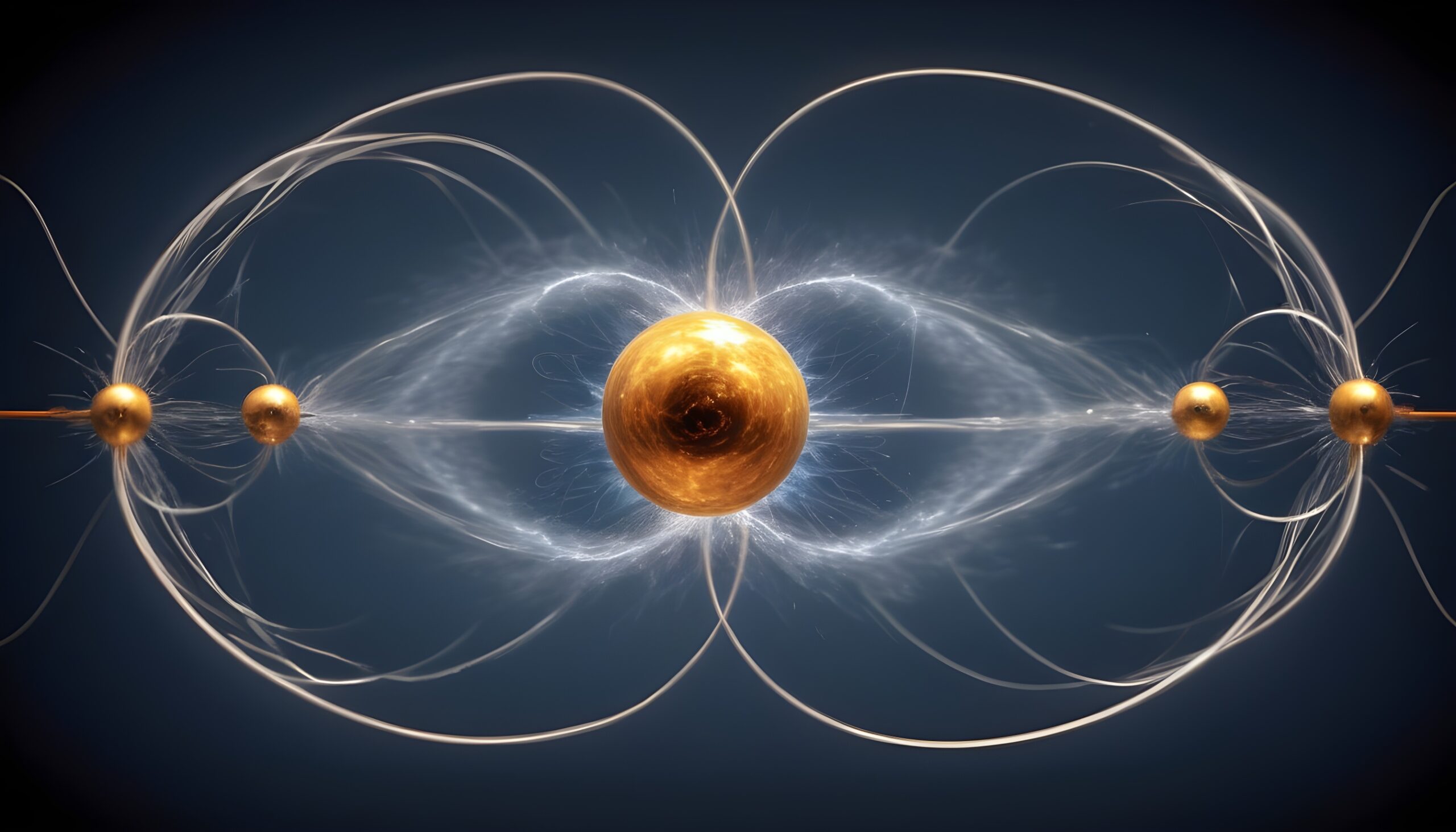In the realm of quantum mechanics, the concept of wave-particle duality stands as one of the most intriguing and fundamental principles, challenging our classical notions of particles and waves. At the heart of this enigma lies the dual nature of matter and radiation, which can exhibit both wave-like and particle-like behavior depending on the context of observation. In this comprehensive exploration, we delve into the intricacies of wave-particle duality, examining its historical origins, theoretical foundations, and experimental manifestations. Through mathematical equations and real-world examples, we seek to illuminate the mysterious interplay between waves and particles that lies at the heart of quantum reality.
Historical Origins and Development:
The concept of wave-particle duality, a cornerstone of modern physics, traces its historical origins to the early 20th century, during a period of profound scientific upheaval and discovery. Physicists of the time were confronted with perplexing phenomena that defied classical explanations, prompting a radical shift in our understanding of the nature of light and matter.
In 1905, Albert Einstein proposed his groundbreaking theory of the photoelectric effect, which suggested that light consists of discrete packets of energy called photons. This revolutionary idea challenged the prevailing wave theory of light and introduced the notion of light behaving as both a wave and a particle, depending on the context of observation. Einstein’s work laid the foundation for the quantum theory of light and marked the dawn of the wave-particle duality paradigm.
Concurrently, the development of quantum mechanics by luminaries such as Max Planck, Niels Bohr, and Louis de Broglie further advanced our understanding of wave-particle duality. In 1924, de Broglie proposed his hypothesis that particles, such as electrons, could also exhibit wave-like properties. According to de Broglie’s hypothesis, the wavelength of a particle is inversely proportional to its momentum, a concept that challenged conventional notions of particle behavior. Subsequent experimental observations of electron diffraction and interference confirmed de Broglie’s hypothesis, providing compelling evidence for the dual nature of matter.
These seminal contributions laid the groundwork for the modern understanding of wave-particle duality, illuminating the mysterious interplay between waves and particles that lies at the heart of quantum mechanics. Through a combination of theoretical insight and experimental validation, physicists continue to explore the profound implications of this enigmatic phenomenon, pushing the boundaries of our comprehension of the quantum world.
Mathematical Formulation:
The mathematical formalism of wave-particle duality is encapsulated in the wave function, a complex-valued function that describes the probability amplitude of finding a particle at a given position and time. In quantum mechanics, particles are described by wave functions that satisfy the Schrödinger equation, a partial differential equation that governs their evolution over time.
The time-dependent Schrödinger equation for a particle of mass \(m\) in a potential \(V\) is given by:
\[i\hbar\frac{\partial \Psi}{\partial t} = \left(-\frac{\hbar^2}{2m}\nabla^2 + V\right)\Psi\]
Where:
– \(i\) is the imaginary unit,
– \(\hbar\) is the reduced Planck constant,
– \(\Psi\) is the wave function of the particle,
– \(\nabla^2\) is the Laplacian operator,
– \(V\) is the potential energy.
The solutions to the Schrödinger equation represent the possible states of the particle, each characterized by a particular energy, momentum, and spatial distribution. The square of the absolute value of the wave function, \(|\Psi|^2\), gives the probability density of finding the particle at a given position, reflecting the probabilistic nature of quantum mechanics.
Experimental Manifestations:
Experimental evidence for wave-particle duality abounds in a plethora of phenomena that showcase the dual nature of particles, exhibiting both wave-like and particle-like behavior. Among the most renowned demonstrations of this enigmatic concept is the double-slit experiment, which has been instrumental in unraveling the mysteries of quantum mechanics since its inception.
First conducted by Thomas Young in 1801 using light waves, the double-slit experiment involves passing a beam of light through two narrow slits and observing the pattern formed on a screen placed behind the slits. Surprisingly, instead of two distinct bands of light corresponding to the slits, an interference pattern emerges on the screen, characterized by alternating bright and dark fringes. This interference pattern is a hallmark of wave-like behavior, indicating that light waves undergo constructive and destructive interference as they pass through the slits.
Remarkably, when the double-slit experiment is repeated with individual particles such as photons or electrons, they too exhibit an interference pattern on the screen, despite being fired one at a time. This puzzling observation suggests that particles also possess wave-like properties, challenging the classical distinction between particles and waves.
Mathematically, the interference pattern observed in the double-slit experiment can be described by the wave function of the particles, which undergoes interference as it propagates through the slits. The probability distribution of the particles on the screen is determined by the square of the absolute value of the wave function, reflecting regions of high and low probability density corresponding to bright and dark fringes, respectively.
Another intriguing manifestation of wave-particle duality is wave packet spreading, a phenomenon in which a localized wave packet representing a particle gradually spreads out over time. This spreading arises from the Heisenberg Uncertainty Principle, which dictates that the position and momentum of a particle cannot be simultaneously measured with arbitrary precision. Consequently, wave packets representing particles exhibit a characteristic spread in both position and momentum, blurring the distinction between particles and waves.
These experimental manifestations of wave-particle duality underscore the profound and mysterious nature of quantum reality, challenging our classical intuitions and reshaping our understanding of the fundamental constituents of the universe. By probing the dual nature of particles through a variety of experiments, physicists continue to unravel the intricate workings of the quantum world, paving the way for groundbreaking discoveries and technological advancements.
Implications and Interpretations:
Wave-particle duality, a cornerstone of quantum mechanics, carries profound implications that challenge classical notions of reality and revolutionize our understanding of the behavior of matter and radiation at the quantum level. This enigmatic concept fundamentally alters our perception of particles, transforming them from classical entities with well-defined trajectories into wave-like entities characterized by inherent uncertainty and probability distributions. The implications of wave-particle duality extend far beyond the realm of physics, permeating our philosophical understanding of the universe and our place within it.
One of the primary implications of wave-particle duality is its profound impact on our interpretation of quantum mechanics. The Copenhagen interpretation, formulated by Niels Bohr and Werner Heisenberg, asserts that particles exist in a state of superposition, simultaneously occupying multiple states, until they are observed or measured. According to this interpretation, the act of measurement causes the particle’s wave function to collapse to a single definite state, leading to the emergence of classical behavior. The Copenhagen interpretation emphasizes the role of observation in quantum mechanics and highlights the inherent uncertainty and indeterminacy of quantum phenomena.
Another interpretation of wave-particle duality is the pilot-wave theory, originally proposed by Louis de Broglie and later developed by David Bohm. This theory posits the existence of hidden variables that determine the trajectory of particles and account for their wave-like behavior. In the pilot-wave interpretation, particles are guided by a pilot wave that guides their motion, leading to deterministic outcomes. While the pilot-wave theory offers a deterministic description of quantum mechanics, it requires the introduction of non-local interactions and additional degrees of freedom, challenging our classical intuitions of locality and causality.
The implications of wave-particle duality extend beyond the realm of interpretation and philosophy, influencing our technological capabilities and shaping the course of scientific inquiry. The development of quantum technologies, such as quantum computing and quantum cryptography, relies on our understanding of wave-particle duality and the principles of quantum mechanics. By harnessing the wave-like properties of particles, researchers are exploring new frontiers in computation, communication, and information processing, paving the way for transformative advancements in science and technology.
Wave-particle duality represents a profound shift in our understanding of the nature of reality, challenging classical conceptions of particles and waves and reshaping our interpretation of quantum mechanics. Its implications extend from the philosophical realm to the practical domain, driving scientific inquiry and technological innovation and opening new avenues for exploration and discovery in the quantum world. As we continue to grapple with the mysteries of wave-particle duality, we embark on a journey into the heart of quantum reality, where particles and waves dance in a delicate and mysterious harmony.
In conclusion, wave-particle duality stands as a cornerstone of modern physics, challenging our classical notions of particles and waves and revealing the profound interplay between matter and radiation at the quantum level. Through mathematical equations and experimental observations, we have explored the dual nature of particles and waves, from the wave functions of quantum mechanics to the interference patterns of the double-slit experiment. Wave-particle duality poses deep philosophical questions about the nature of reality and the role of observation in shaping our understanding of the physical world. As we continue to unravel the mysteries of quantum mechanics, wave-particle duality remains a central and enigmatic feature of the quantum landscape, guiding our exploration of the fundamental principles that govern the universe.










More Stories
Inside the Hormonal Symphony: Understanding the Endocrine System
Understanding Gallstones: Causes, Symptoms, and Treatment Options
The Intricacies of Cells: Exploring the Building Blocks of Life